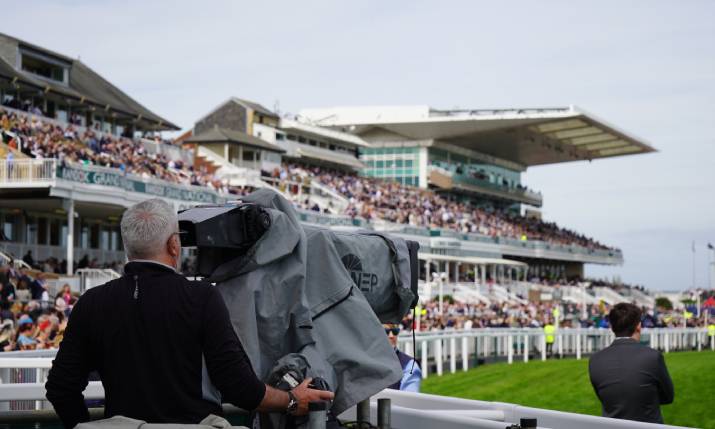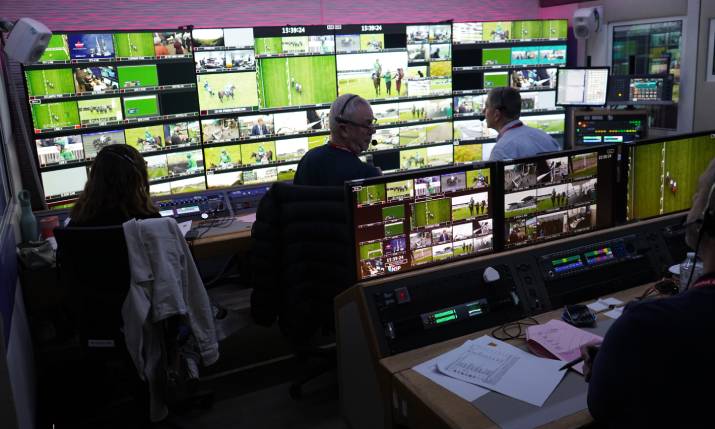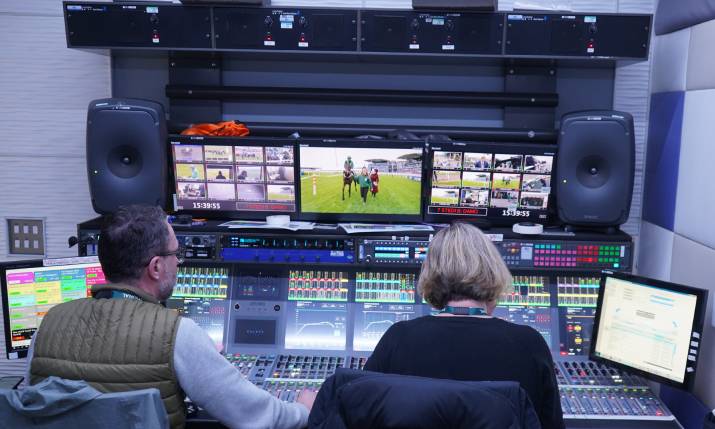NEP battles weather to keep the going good for Grand National coverage

The 2024 Grand National is NEP’s eighth with ITV Racing
The 177th running of the Grand National is NEP’s eighth with ITV Racing and this year they’ve had considerable weather challenges during the build, with high winds, wet weather and soft ground to contend with.
Regardless, the NEP technical teams got to work, with three days to build the multiple commentary and camera positions across the four-mile, 514-yard race course.
“During these builds there are always logistical challenges to deal with as well, as the race courses are preparing their course for their flagship event,” explains Jon Harris, technical projects manager at NEP. “For example, moving technical kit to remote places such as the famous ‘Canal Turn’ can be challenging and time consuming, as it’s the furthest distance from the OB trucks.”
Coverage of the racing action is pulled together from more than 50 camera sources plus 19 radio links including shared camera feeds from RaceTech (horse racing’s integrity coverage supplier), in addition to the multicamera presentation studio, on-course interviews and reports which take place during the show.
“Every year, we continue to refine our setup and rig,” Harris says. “Our years of experience in delivering this complex event, combined with our continuity in our crewing, means we have the top specialists when it comes to horse racing broadcast.”

NEP crew hard at work on the Grand National 2024
Throughout the calendar, NEP provide NEP Equinox as the main HD baseband broadcast truck for ITV Racing and many of the specific racing requirements can remain setup within the truck, meaning more efficient build and rigging times.
“For events such as the Grand National we are able to scale the operation to meet specific technical requirements, meaning we retain the same work space for the production team and still have the benefit of having the core setup installed in the truck,” Harris says.
By and large the camera set up and presentation is the same as 2023. This includes a pair of depth of field cameras (used extensively on earlier Six Nations coverage) for, “lovely emotion shots of winning jockeys and crowd,” says ITV Sport programme director Paul McNamara.
The experiment putting augmented reality (AR) graphics onto drone footage last year did not prove as successful. “It took such a long time for us to get it into the pre-record so we’re not doing that this time,” explains Tony Cahalane, technical director, ITV Sport.
However, ITV Sport is deploying AR graphics more extensively from a feed captured by the main wire-cam that runs 730 metres across the course. This Camcat Colibri wire-cam is supplied by specialist camera partner ACS with broadcast graphics partner AE Live producing the graphics as it does across the show’s whole output.
Two tracking vehicles, also supplied by ACS, keep pace with the riders travelling at 40mph with a Cineflex on a jib and a Sony F55 for 3 x high motion. Another super-slo is positioned on the finish line.
Four minicams are built into fences. At Fence One, for example, a minicam in the middle of the fence takes shots towards the grandstand of the runners.
“It’s a really impressive shot with the runners all coming towards the fence and jumping it,” says Harris.
With all the current industry excitement about whether the promise of 5G network slicing might finally be about to be fulfilled, it is something that has been on ITV’s radar for some time but still might not be appropriate for a large race meet like the Grand National.
Explains Cahalane: “Effectively there are two reasons why it doesn’t help us. At Aintree we really need a guaranteed 5G network and that doesn’t happen without cost and the cost is quite extreme. Added to which at this moment there isn’t enough 5G infrastructure in the immediate area. We would need more Towers.
“But it’s also a question of control. Radio frequencies are in our control completely whereas that’s not necessarily the case with a 5G network where you are beholden to a telecom provider. The Grand National is one of those situations where we know what we need to do in order to get the best pictures and so we want to maintain RF spectrum to be absolutely in control.”
 News coverage is a different matter however. “I do understand 5G’s advantage for pop-up news stories especially in places which aren’t necessarily populated with a hundred thousand fans who are all on their mobile phones,” Cahalane says.
News coverage is a different matter however. “I do understand 5G’s advantage for pop-up news stories especially in places which aren’t necessarily populated with a hundred thousand fans who are all on their mobile phones,” Cahalane says.
“5G definitely has uses but not yet in large-scale events like the Grand National. It’s not only cost prohibitive, it’s easier for us to do it with digital radio camera technology.”
The average viewing figure for last year’s Grand National programme, aired on ITV’s main channel, was 4.4 million, which was up from 4.1 million in 2022. The team are hoping to have matched or exceeded that this time around.
The Grand National was won this year by ‘I Am Maximus’, the 7/1 joint favourite.

